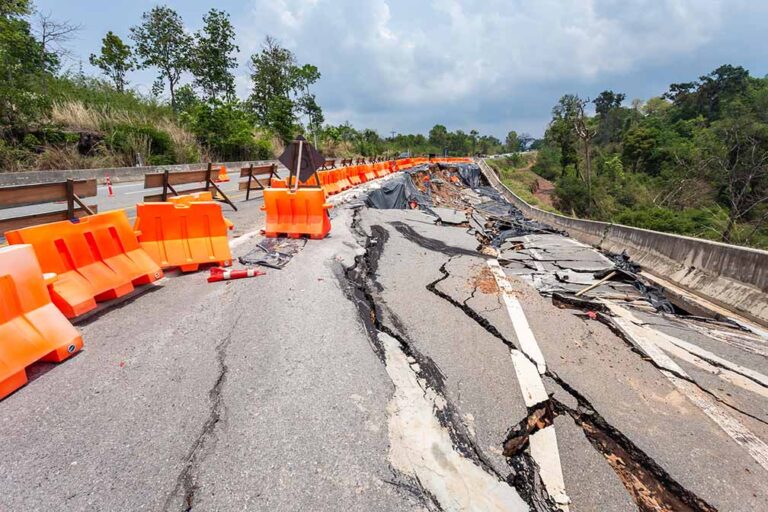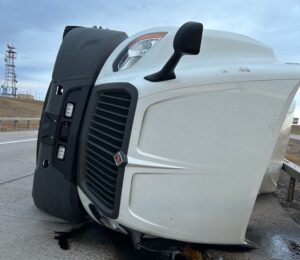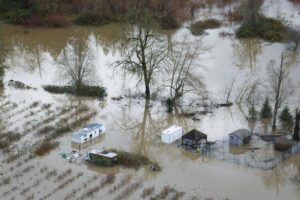LITTLE ROCK, Ark. — February marks Earthquake Awareness Month. Earthquakes can occur in every region of the country, at any time of the year and usually without warning. That could mean that you’re driving your truck when an earthquake strikes.
Would you know what to do if you’re on the road when an earthquake occurs? Heeding these safety tips can help you cope with an earthquake if you’re in your truck when the ground starts shaking.
Driving During an Earthquake
- If an earthquake occurs while you’re driving, slow down, look for an open area to stop and pull over as soon as it is safe to do so.
- Avoid parking near or under bridges, overpasses, signs, building overhangs, power lines, trees or any other hazard that might fall onto your truck.
- Turn off the engine, set the parking brake and stay seat-belted in your truck until the earthquake is over.
- If a power line falls on your truck, stay inside and wait until an emergency worker removes the wire. Only leave your truck if staying inside poses an immediate threat to the welfare of you or your passengers.
Communication
- Turn on your radio and CB and listen for official instructions, updates, warnings and advice. Channel 9 is the universal CB emergency channel. In most areas, it is monitored by local law enforcement at all times. Most over-the-air radio stations will switch to emergency broadcasting, apprising you of local conditions.
- Although your first instinct may be to contact friends and relatives, limit your telephone usage unless you must report severe injuries or are in immediate danger. Wireless service may quickly become compromised due to high call volume and downed cell towers. You can help keep phone lines open for emergency use by limiting all non-essential communication.
The Immediate Aftermath
- Once the shaking stops, get out of your truck and assess any damage to your rig and the immediate vicinity.
- Check yourself and your passengers for injuries.
- Do not drive your truck unless there is an emergency or until travel has been cleared by the authorities. Remember, it may be safer to stay where you are, particularly if there is chaos on the roads.
Driving After an Earthquake
Be extremely cautious when driving after an earthquake. After large earthquakes, expect tremors and aftershocks. Aftershocks can easily dislodge concrete from damaged buildings and other structures.
- Avoid roadways, ramps and bridges that might have been damaged, even if there isn’t any visible damage.
- Watch for cracks and breaks in the pavement and never drive over a downed power line.
- Expect traffic light outages and road obstructions.
- Stay alert for panicked or distracted drivers around you.
- If you are driving in a mountainous or rocky area, be wary of the potential for landslides onto the road.
- Do not go sightseeing through damaged areas. You will only interfere with the relief effort. Keep streets clear for emergency vehicles.
You can help ensure your safety and the safety of your passengers by learning to prepare for an earthquake and following a few simple safety tips. Also, if you live in an area prone to earthquakes, consider keeping a personal emergency kit in your truck. The Central United States Earthquake Consortium and the Centers for Disease Control and Prevention provide detailed lists of essential items to be sure to include in your kit.
The Trucker News Staff produces engaging content for not only TheTrucker.com, but also The Trucker Newspaper, which has been serving the trucking industry for more than 30 years. With a focus on drivers, the Trucker News Staff aims to provide relevant, objective content pertaining to the trucking segment of the transportation industry. The Trucker News Staff is based in Little Rock, Arkansas.














